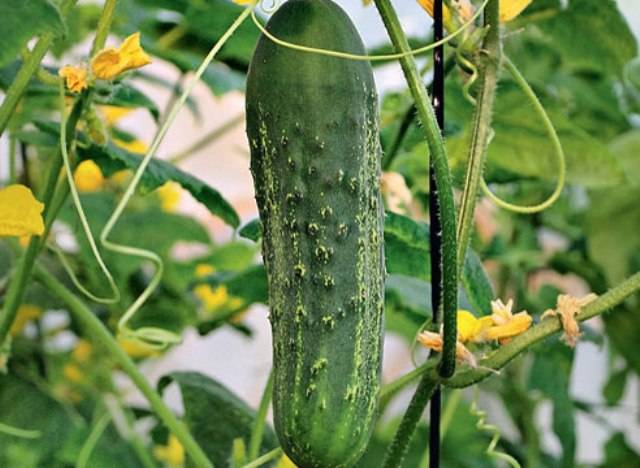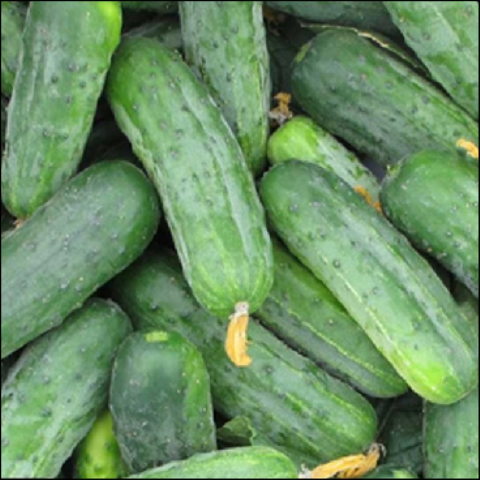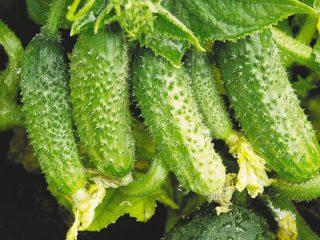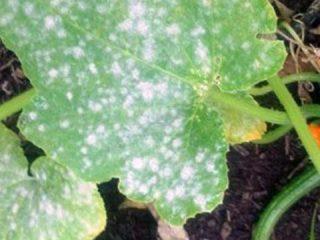Content
According to statistics, cucumbers are one of the most grown vegetable crops in Russia, after potatoes and onions. It is known that the state has allocated more than 90 thousand hectares of land for its planting, and the number of hybrids and varieties used for growing has already reached 900. More than 700 species have been bred by domestic breeders.
Gardeners who first started growing cucumbers in hotbeds and hothouses are asking questions: “Which hybrid varieties of cucumbers should I choose to get high yields and tasty fruits? Why is preference given to hybrids when planting and how to choose a variety that optimally meets the requirements?”
Advantages of planting hybrid varieties
All cucumber seeds offered for sale today are divided into hybrid and varietal. The main difference is the ability to collect seeds for planting next season. When harvesting varietal cucumbers, 2-3 ripe fruits are left on the bush until fully ripe, and then the material is collected for subsequent cultivation.
Hybrid varieties are not suitable for such collection.Seeds are obtained by selectively crossing various types and forms of cucumbers, while securing parental heterosis (resistance to diseases and climatic conditions). In this case, high-yielding varieties are taken as a basis.
The best hybrid varieties are those created by breeders in one generation. They have exceptional hardiness, long growing season and certain criteria in fruit density and size. In addition, hybrids are practically not susceptible to diseases characteristic of vegetables grown in greenhouses. They are able to produce a large number of fruits even in years unfavorable for yield.
Today there are quite a large number of hybrid seeds on sale. Their cost is slightly higher than usual, which is caused by the long and complex work of breeders. When choosing the material needed for planting, be sure to read the instructions.
How to choose the right one
The main factors influencing the choice of seeds are the conditions for growing cucumbers (in a greenhouse or open ground) and the purpose of using the crop (canning, pickling, salads). On the shelves you can find the best seeds from German and Dutch producers, but gardeners with experience in growing vegetables recommend choosing self-pollinating varieties that have been bred by breeders for your region.
If you are going to grow crops in a greenhouse or greenhouse, be sure to pay attention to the following information in the instructions:
- How often should the plant be fertilized?
- What is the method of formation;
- What type of pollination?
- Degree of endurance to temperature changes;
- Possibility of growth in shaded lighting;
- Fruit ripening time;
- Seasonality of ripening;
- Use of the crop and the possibility of long-term storage.
As a rule, all this data is present in the descriptions of hybrids. They also necessarily include recommendations for growing seeds in film panics or polycarbonate greenhouses.
Translated from Italian, this symbol means “children of the first generation.”
If the plant will be grown in a greenhouse, the design of which includes a sliding ceiling, you can choose an insect-pollinated hybrid for planting.
Types and groups of hybrids
When choosing a specific variety of cucumbers for planting, it is important to know the criteria for distinguishing a particular hybrid and the possibility of its growth in your climate zone.
Breeders have identified three main types of hybrid cucumbers:
- With active branching. During the growth process, the plant produces a large number of small shoots in each ovary, which must be pinched;
- With moderate branching – have small side shoots;
- With weak branching (otherwise called inert) - small shoots are concentrated into a bunch, and visually resemble small bouquets.
The genetic data of the variety play a major role in the branching process, but during cultivation, this can also be influenced by external climatic factors. For example, if you grow spring-summer varieties of cucumbers, be prepared for the fact that there should always be a lot of lighting in the greenhouse.
Another type of hybrid is cold-resistant. Developed by breeders specifically for the northern regions of the country.It is known that cucumber fruits always react to sudden drops in temperature, and even if the greenhouse is thermally insulated, the plant is at risk of contracting a fungal infection. Winter varieties of hybrids are resistant to any viral diseases and easily tolerate fairly low temperatures.
The best productive varieties for greenhouses
To grow cucumbers in greenhouse conditions, it is recommended to choose those varieties of hybrids that have a long growing season and are able to bear fruit at any time of the year. Since you can start planting seedlings in the greenhouse as early as mid-March, choose high-yielding varieties and you are guaranteed to harvest the freshest fruit almost all year round.
The best domestic hybrids for growing in greenhouses
Dynamite F1
Does not require special care, regular feeding and watering, is resistant to viral and fungal diseases, and easily tolerates low light. Belongs to the group of the earliest varieties, since seedlings can be transplanted into greenhouse conditions at the very beginning of spring.
Hercules 1
A late-ripening variety. It is planted in the ground in early or mid-summer, and bears fruit until the end of November. Cold-tolerant, the crop produces a large number of gherkins, ideal for canning.
Emelya 1
It has a long growing season, so productivity is the main advantage of this hybrid. In addition, the variety is quite versatile, and is suitable for use both raw and in pickling and canning.
Vyaznikovsky-37
Productive hybrids, time-tested. Universal fruits of high quality, reach a length of 10-12 cm. The variety is resistant to diseases and does not require regular watering and fertilizing.
Phoenix 640
The peculiarity of the hybrid is that it is insect-pollinated, so it needs to be grown only in greenhouses with an opening top. The fruits are medium and large in size, without bitterness, dense and crispy.
Dutch varieties for greenhouses
The most productive hybrids of the new generation, adapted to growth in the climatic conditions of Central Russia, have been selected as a recommendation:
Bettina F1
A variety belonging to the parthenocarpic species. The fruits are small cylindrical gherkins. Refers to early hybrids of high yield.
Hector F1
Has exceptional fruits for pickling and preservation. These gherkins are small in size, elastic and extremely tasty. Seeds are planted in early spring, and the long growing season allows harvesting until mid-autumn.
Angelina
The variety is self-pollinating and therefore suitable for growing in any greenhouse or greenhouse. An early hybrid with crunchy fruits – gherkins.
Bride F1
For real “gourmets” of the garden, breeders in Germany and Holland began to develop the best exclusive varieties of hybrids, literally striking not only in size, but also in color. Recently, Dutch seeds “Bride F1” can be found on the domestic agricultural market. These are white cucumbers of regular cylindrical shape, up to 6-7 cm long, with tender and tasty pulp.
The best varieties by cultivation time
The main selection criterion is the expected date of planting and the time of harvesting a bountiful harvest.Based on these data, breeders divided all hybrid varieties into groups according to growing time:
- End of summer. Seedlings of cold-resistant varieties are grown, with a high degree of resistance to fungal diseases and low light. These are like Novgorodets F1, Graceful, Emelya F1, Muromsky.
- Winter-spring. Hybrids with a short growing season. All varieties have a dense fruit structure and excellent taste without a characteristic bitterness. These include: Moscow greenhouse, Blagovest F1, Relay F1.
- Spring. The best productive hybrids, unpretentious to regular watering and fertilizing, do not require bright lighting. The best productive varieties of the group: Zozulya F1, April F1. Both varieties produce fruits whose average weight can reach 230-250 grams.
These are just a few hybrid varieties that have proven themselves well among knowledgeable gardeners. If you are just starting to grow cucumbers in greenhouses, be careful when choosing seeds. When purchasing, choose the most popular and gardener-tested hybrids from trusted manufacturers.






















